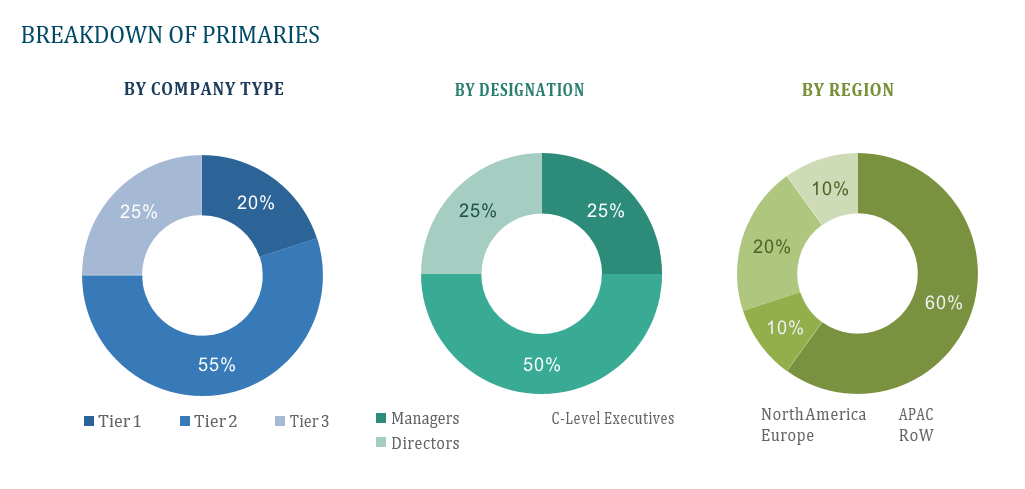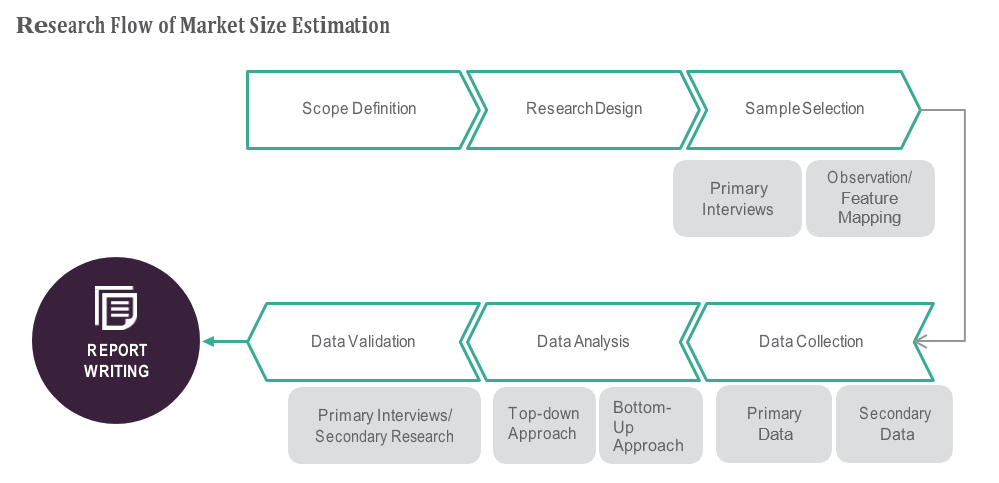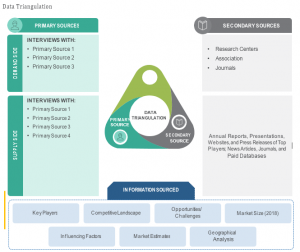OVERVIEW
The Enterprise File Sharing and Synchronization Market is currently valued at USD 12.24 billion in 2024 and will be growing at a CAGR of 24.38% over the forecast period to reach an estimated USD 36.42 billion in revenue in 2029. The Enterprise File Sharing and Synchronization (EFSS) market encompasses solutions designed to allow organizations to store, share, and synchronize files securely across multiple devices, enabling efficient collaboration and data management. This market has grown significantly as businesses of all sizes seek to improve productivity, facilitate remote work, and ensure data security in an increasingly digital workspace. EFSS platforms typically offer features like real-time editing, version control, encryption, and access controls, catering to the diverse requirements of modern enterprises. With the rise of cloud computing and mobile workforce trends, the demand for scalable, accessible, and secure file sharing solutions continues to surge, driving innovation and competition among providers in this space.
Enterprise File Sharing and Synchronization (EFSS) sector are fueled by the increasing demand for enhanced collaboration and productivity within dispersed teams, the growing necessity for robust data security measures, and the rapid expansion of the mobile workforce. The shift towards remote and hybrid work models has underscored the need for seamless access to files from any location, on any device, pushing organizations to adopt EFSS solutions. Furthermore, regulatory compliance requirements for data protection and privacy have become stricter, compelling businesses to invest in secure file sharing platforms that offer encryption and audit trails. Additionally, the continuous growth in data volume generated by enterprises necessitates efficient file management and synchronization capabilities, further propelling the market forward. These drivers, combined with the integration of advanced technologies like artificial intelligence for smarter data handling and analytics, are significantly shaping the EFSS market landscape.
Market Dynamics
Drivers:
Enterprise File Sharing and Synchronization (EFSS) sector are fueled by the increasing demand for enhanced collaboration and productivity within dispersed teams, the growing necessity for robust data security measures, and the rapid expansion of the mobile workforce. The shift towards remote and hybrid work models has underscored the need for seamless access to files from any location, on any device, pushing organizations to adopt EFSS solutions. Furthermore, regulatory compliance requirements for data protection and privacy have become stricter, compelling businesses to invest in secure file sharing platforms that offer encryption and audit trails. Additionally, the continuous growth in data volume generated by enterprises necessitates efficient file management and synchronization capabilities, further propelling the market forward. These drivers, combined with the integration of advanced technologies like artificial intelligence for smarter data handling and analytics, are significantly shaping the EFSS market landscape.
Key Offering:
Key offerings in the Enterprise File Sharing and Synchronization (EFSS) market are centered around providing secure, efficient, and scalable solutions for data management and collaboration. These platforms offer a suite of features designed to meet the diverse needs of modern enterprises, including secure file sharing across devices, real-time collaboration tools, version control, and automated synchronization to ensure team members have access to the latest files. Advanced security measures such as end-to-end encryption, multi-factor authentication, and data loss prevention are integral to protect sensitive information against unauthorized access and cyber threats. Additionally, many EFSS solutions include compliance management features to help organizations adhere to regulatory standards. The integration of artificial intelligence and machine learning technologies further enhances these offerings, enabling smart search capabilities, predictive analytics, and personalized experiences. Together, these features aim to streamline workflow, enhance productivity, and ensure data integrity in a highly digitalized corporate environment.
Restraints :
The expansion of the Enterprise File Sharing and Synchronization (EFSS) market faces several restraints that hinder its full-scale adoption across all sectors. Primarily, concerns over data security and privacy pose significant challenges, as the increasing frequency and sophistication of cyber-attacks make organizations wary of adopting cloud-based EFSS solutions. The complexity of ensuring compliance with a myriad of global and local regulatory requirements adds another layer of difficulty, particularly for industries handling sensitive information, such as healthcare and finance. Additionally, the integration of EFSS systems with existing IT infrastructure can be complex and costly, especially for large enterprises with legacy systems. Resistance to change from employees accustomed to traditional file-sharing methods and the ongoing need for training to ensure effective use of new EFSS tools also act as barriers. Furthermore, the highly competitive nature of the market, with numerous vendors offering overlapping features, can overwhelm decision-makers, complicating the selection process and potentially delaying implementation.
Regional Information:
In developed regions such as North America and Western Europe, where robust internet connectivity and advanced IT infrastructure are prevalent, EFSS adoption is relatively high, driven by the need for efficient collaboration and remote work capabilities. Additionally, stringent data protection regulations, such as GDPR in Europe and HIPAA in the United States, contribute to the demand for secure EFSS solutions. In contrast, emerging economies in Asia-Pacific, Latin America, and Africa are witnessing a gradual uptake of EFSS solutions, fueled by increasing digitization efforts, rising internet penetration rates, and a growing awareness of the benefits of cloud-based collaboration tools. However, challenges such as infrastructure limitations, regulatory hurdles, and varying levels of technological maturity across different regions remain barriers to widespread adoption. Overall, the EFSS market demonstrates promising growth opportunities globally, albeit with regional nuances and challenges.
Recent Developments:
• July 2023 – Google has officially released its Nearby Share app for Windows PCs, which makes file-sharing between various devices, including phones, tablets, and Chromebooks, more accessible. The app’s official launch included several new improvements, such as the estimated time for file transfers to be completed and image previews within device notifications showing the correct file being shared.
.• August 2023 – IBM launched an open-source detection and response framework for MFT attacks. The goal is to help defenders detect attacks enabled by managed file transfer application vulnerabilities more quickly and provide an incident response playbook.
Key Players:
Frequently Asked Questions
1) What is the projected market value of the Enterprise File Sharing and Synchronization Market?
– The Enterprise File Sharing and Synchronization Market is expected to reach an estimated value of USD 36.42 billion in revenue by 2029.
2) What is the estimated CAGR of the Enterprise File Sharing and Synchronization Market over the 2024 to 2029 forecast period?
– The CAGR is estimated to be 24.38% for the Enterprise File Sharing and Synchronization Market over the 2024 to 2029.
3) Who are the key players in the Enterprise File Sharing and Synchronization Market?
– Dropbox, Box, Google Drive (Google Workspace), Microsoft OneDrive (Microsoft 365), Citrix Systems, IBM Corporation, Egnyte, Syncplicity (Dell Technologies), OwnCloud, Nextcloud
4) What are the drivers for the Enterprise File Sharing and Synchronization Market?
– The EFSS sector is gaining momentum due to increased collaboration, data security, and the rise of remote work. The shift towards hybrid work models, stricter data protection regulations, and the growing data volume are driving organizations to adopt secure file sharing platforms. Advanced technologies like artificial intelligence are also influencing the market.
5) What are the restraints and challenges in the Enterprise File Sharing and Synchronization Market?
– The Enterprise File Sharing and Synchronization (EFSS) market faces challenges due to data security, privacy, regulatory compliance, integration with existing IT infrastructure, resistance from employees, and ongoing training. The highly competitive market with numerous vendors can complicate the selection process and delay implementation, especially in industries handling sensitive information like healthcare and finance.
6) What are the key applications and offerings of the Enterprise File Sharing and Synchronization Market?
– The Enterprise File Sharing and Synchronization (EFSS) market offers secure, efficient, and scalable data management solutions. These platforms include secure file sharing, real-time collaboration tools, version control, and automated synchronization. Advanced security measures, compliance management, and AI/ML integration enhance workflow, productivity, and data integrity in a digitalized corporate environment.
7) Which region is expected to drive the market for the forecast period?
– North America is expected to have the highest market growth from 2024 to 2029
Why Choose Us?
Insights into Market Trends: Global Market Studies reports provide valuable insights into market trends, including market size, segmentation, growth drivers, and market dynamics. This information helps clients make strategic decisions, such as product development, market positioning, and marketing strategies.
Competitor Analysis: Our reports provide detailed information about competitors, including their market share, product offerings, pricing, and competitive strategies. This data can be used to inform competitive strategies and to identify opportunities for growth and expansion.
Industry Forecasts: Our reports provide industry forecasts, which will inform your business strategies, such as investment decisions, production planning, and workforce planning. These forecasts can help you to prepare for future trends and to take advantage of growth opportunities.
Access to Industry Experts: Our solutions include contributions from industry experts, including analysts, consultants, and subject matter experts. This access to expert insights can be valuable for you to understand the market.
Time and Cost Savings: Our team at Global Market Studies can save you time and reduce the cost of conducting market research by providing comprehensive and up-to-date information in a single report, avoiding the need for additional market research efforts.









